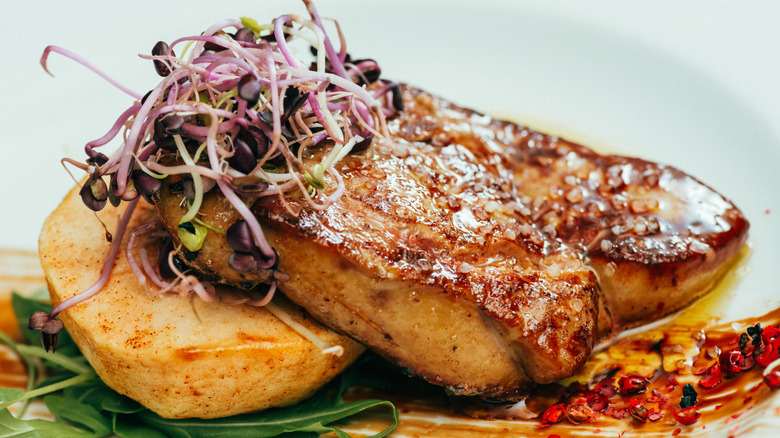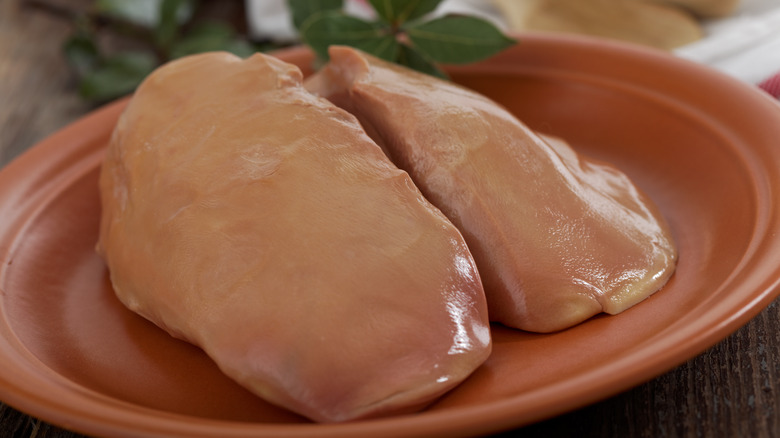The Preparation Tip To Remember When Cooking Foie Gras
The first depiction of a goose being fed to enlarge its liver dates back to ancient Egypt, and over the centuries, foie gras traveled to France, the largest producer of foie gras today. A whole foie gras isn't difficult to cook but it does require some preparation. Most of foie gras is fat and, when cold, it will be difficult to work with, so bring the foie gras to room temperature before working with it. For more foie gras preparation tips, we consulted with Chef Ryan Ratino, an award-winning restauranteur and owner of Maass, Ômo by Jônt, and two Michelin-starred restaurants, Jônt and Bresca.
A fresh foie gras is divided into two lobes, one larger than the other, which you need to carefully separate. After doing that, chef Ratino recommends that you "clean out the cartilage and veins from the center." There are two veins in the large lobe: the main vein that runs the length of the lobe and a center vein where the two lobes were connected. Using a sharp knife, cut along the sides of each vein, and with a paper towel, gently pull the veins out. Move on to the smaller lobe and remove its veins the same way. Pan-searing is considered to be the best way to cook foie gras, but it first needs to be sliced. As Ratino told us, "Run your knife under warm water, then slice the foie gras to create slabs for searing."
What to look for when you buy fresh foie gras
There are three grades of foie gras: A, B, and C. The most common are grades A and B. Grade A is the highest quality, and it's the foie gras you would enjoy at a high-end restaurant. It will have a uniform color with no discoloration or blood spots and should be smooth and supple but not squishy. Grade A foie gras is most often seared, but it can also be slowly cooked in a porcelain terrine and, when cooled, sliced for serving with bread or toast and fruit or a savory or sweet condiment.
Grade B foie gras is smaller and flatter than Grade A and has some minor discoloration and more prominent veins. There isn't much of a taste difference between Grades A and B, but because of the difference in appearance, Grade B is often used to make mousse and layered terrine (not to be confused with pâté). Grade C foie gras is less expensive than the other grades. It's considered to be of lesser quality and is often just used for sauces.
There is still a raging controversy about foie gras by animal-rights activists who believe that the force-feeding is cruel. But if you want to indulge in foie gras for a special occasion, there are enlightened foie gras producers who take a more humane approach and could be worth seeking out.

